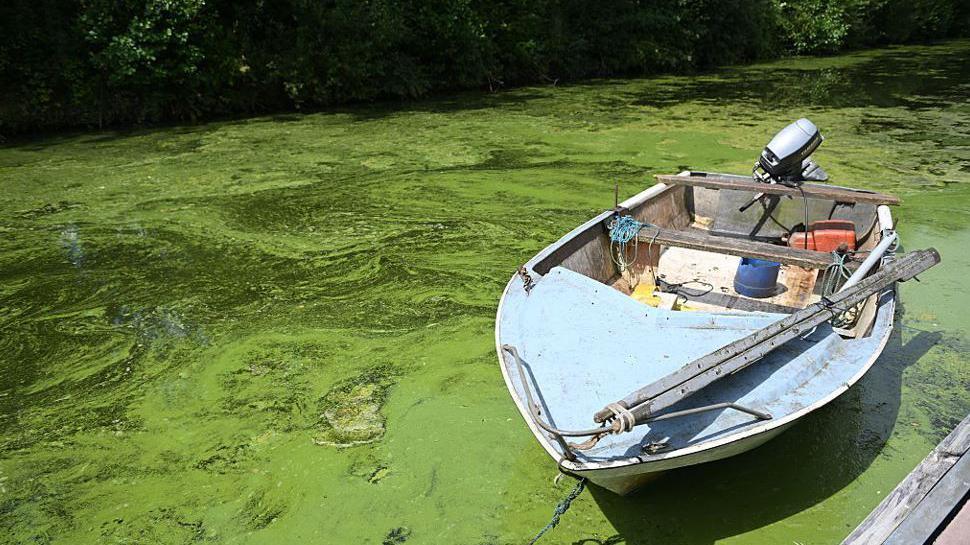'Perfect storm' at Lough Neagh for blue-green algae
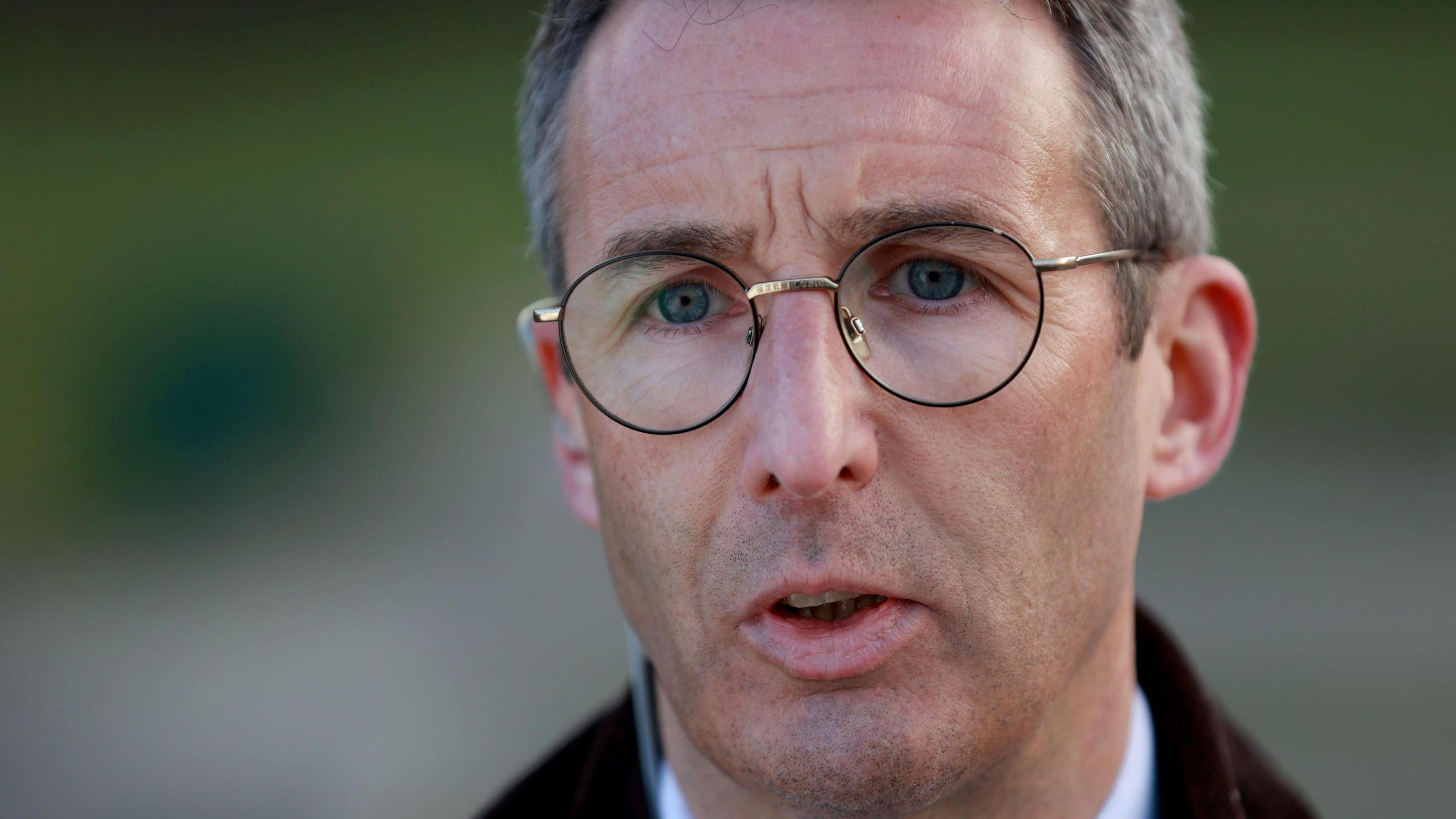
Environment Minister Andrew Muir has called for more support from the Executive to tackle the issues at Lough Neagh
- Published
More support is needed from parties in the executive to tackle the problems with blue-green algae in Lough Neagh, Stormont's agriculture and environment minister has said.
The algae has been detected more than 100 times across Northern Ireland since the start of the year, with the majority of sightings in Lough Neagh and the Lower Bann, as well as Lough Erne.
Lough Neagh, the UK's largest freshwater lake, has been blighted by large blooms of the potentially toxic algae in recent years.
Andrew Muir said: "There's going to be a lot of very big decisions to be made, I need them to back me."
Speaking to BBC News NI Muir said the "distressing scenes" were "sadly not unexpected because of decades of neglect".
"I'm giving my heart and soul to turn the situation around," he said.
"I'm very disappointed at the lack of support from other parties in recent months and urge them to rethink their positions."
"It does seem these have been hollow manifesto pledges and when it comes to the decisions made, they are not standing up for the lough."
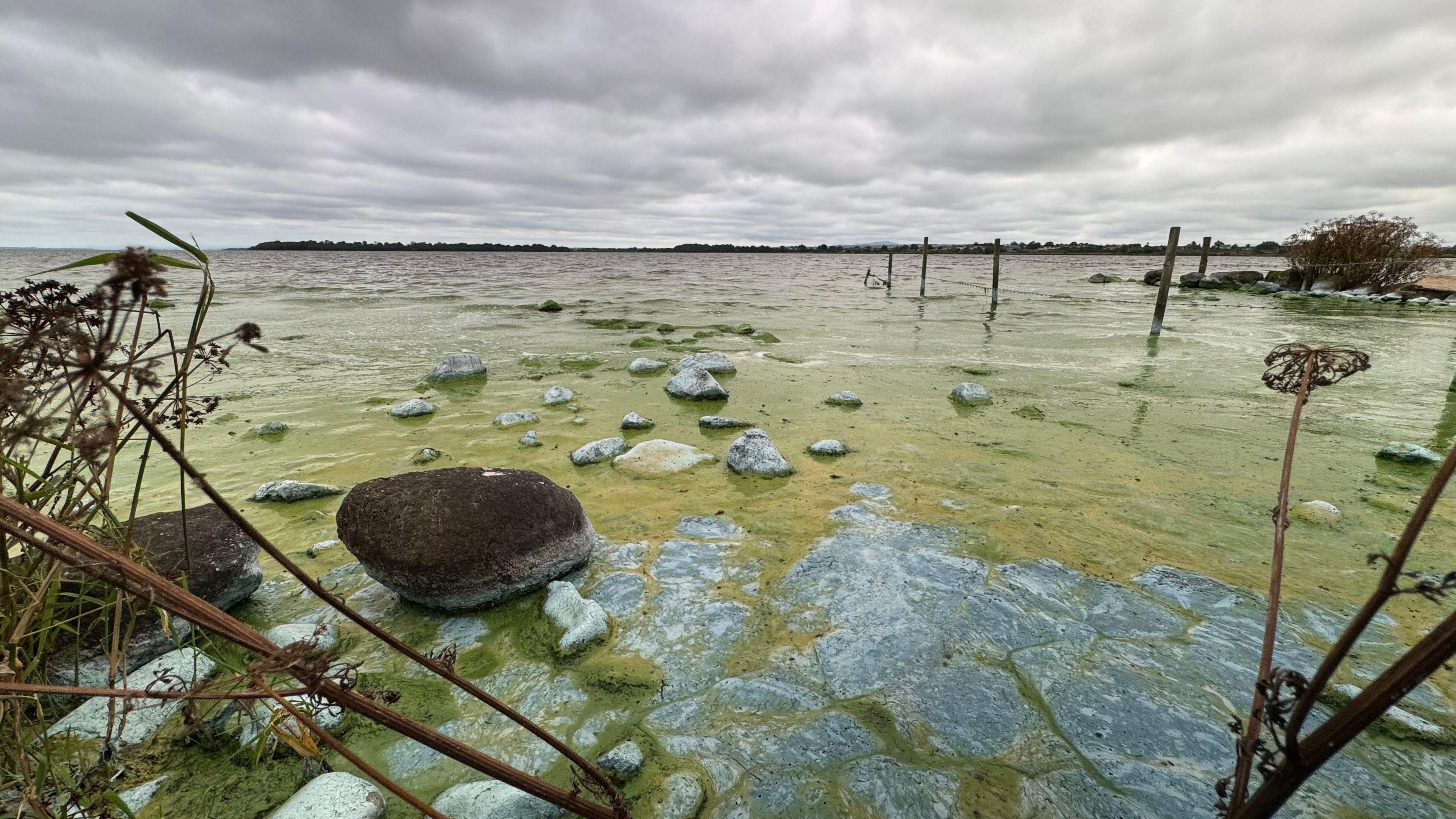
There are ongoing issues at Northern Ireland's largest fresh water body of water
He said there are four key decisions that he needs support for, namely; strengthening environmental governance, strengthening sewage regulation, better management of slurry and fertilisers on farms and support in a climate action plan.
A Lough Neagh Action Plan was approved by the executive last year.
The Department of Agriculture, Environment and Rural Affairs (Daera) said 14 out of 37 actions have been completed, while another 22 are being progressed.
'Not a vanity project'
Ciara Laverty, a Lough Neagh Partnership ranger, said solving the issues at the lough is "not a vanity project".
"The time for finger pointing is over, we know where the nutrients are coming from," she said.
"It's come from agriculture, wastewater, septic tanks, industry around the lough, it's not just one sector of society that's to blame."
Ms Laverty called on politicians to do the right thing and "make difficult decisions which may not be popular".
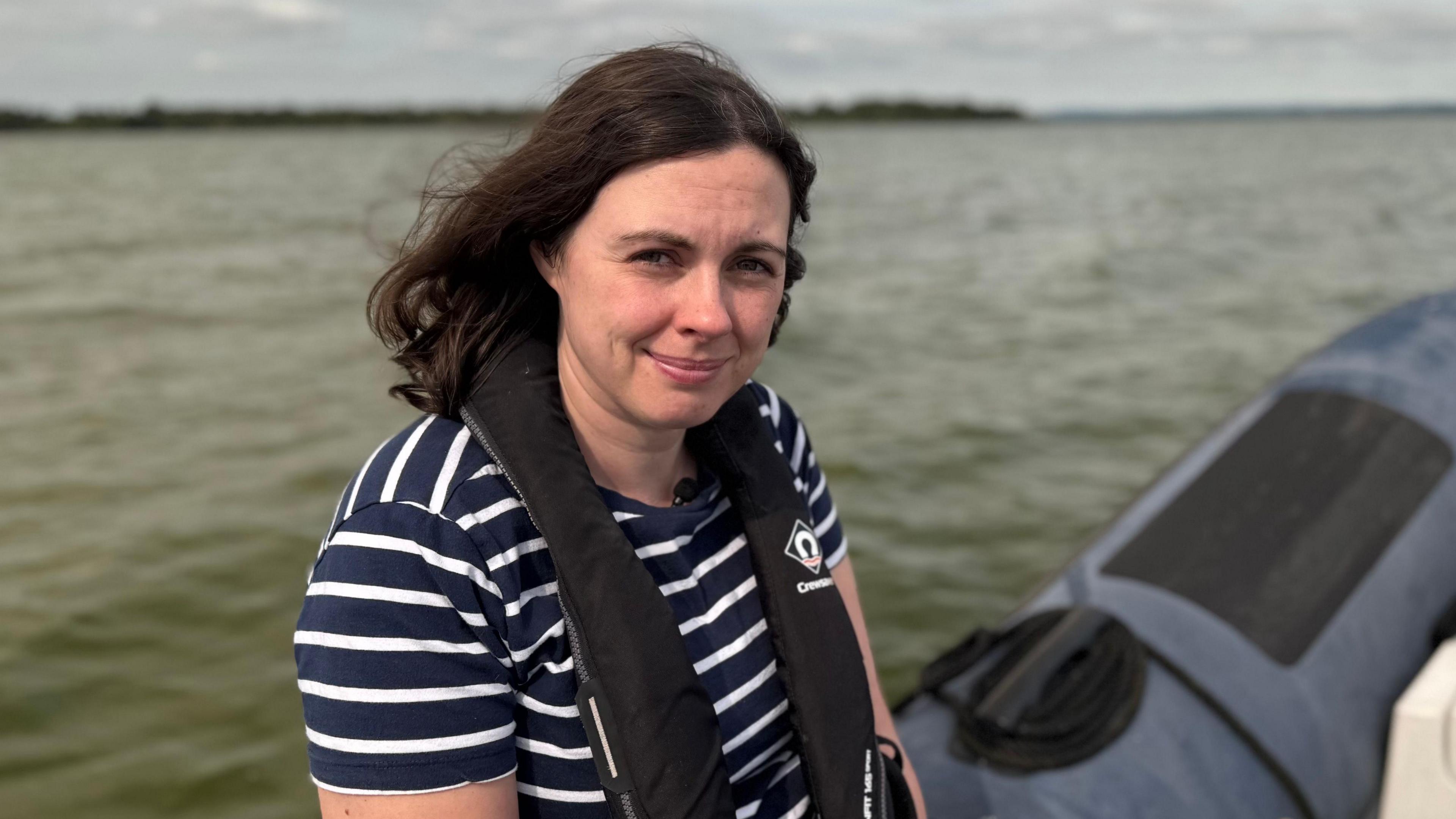
Ciara Laverty wants actions to be taken immediately
The science shows the pollution – nutrient – problem in Lough Neagh comes largely from agriculture, with some from wastewater processing, septic tank seepage and industrial pollution around the shores.
Dr Yvonne McElarney is a freshwater ecologist at the Agri-Food and Biosciences Institute (AFBI).
Dr McElarney said the "best way to dampen down effects of these blooms is to reduce nutrients from the catchment, which is the one part of the puzzle we can solve".
"Other factors that are impacted are climate change, the increased nutrients from the catchment and the change in the nutrient status... is like the perfect storm for this algal bloom to happen."

Dr Yvonne McElarney says the environment is perfect for the algae to bloom
John McLenaghan, deputy president of the Ulster Farmers' Union, said this is not just a challenge for farmers.
"The science suggest that some of the run off from agriculture fields is contributing to the situation in Lough Neagh, amongst other external factors," he said.
Mr McLenaghan said farmers have "significantly decreased the amount of phosphorus" they are using but this has been offset by "non-agricultural phosphorus" which is getting into the lough.
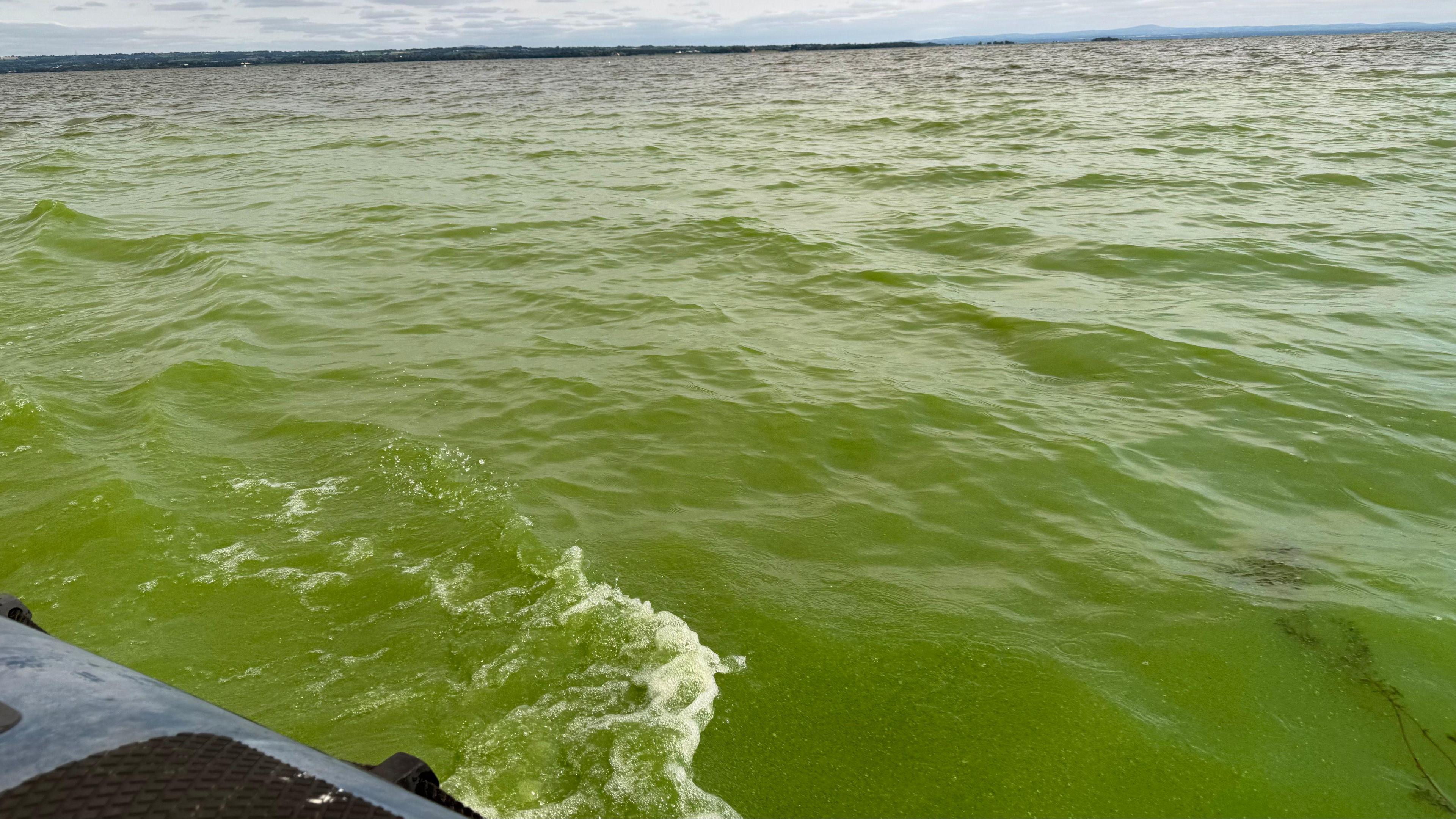
The warm weather has contributed to the blooms of blue-green algae
Mr McLenaghan denied farmers were unwilling to take part in a legal obligation in the Nutrients Action Programme (NAP), saying there had been "significant behavioural change across the agriculture industry".
"What was wrong with this was that Daera decided for the first time that they would exclude farmers from that process."
Mr McClelland said he wants farmers and Daera to work together to improve Lough Neagh.
"If we can get the education and the incentivisation correct then the need for the regulation and enforcement is obviously decreased, and that's a better and smarter way to do it."
Impact on farmers

Michael Meharg adopts a farming with nature approach
Some, like Michael Meharg, adopt a farming with nature approach, with fewer cattle and no fertiliser inputs.
"We are trying to cut back on the amount of nutrients that we use," Mr Meharg told BBC News NI.
But Mr Meharg is worried about any potential impact of the algae on his livestock.
"As a farmer whose cattle are having to go in here and drink this daily, it's important that we get that sorted."
He has had their livers tested after slaughter to ensure there is no absorption of the bacteria.
And he too said more action is needed.
Related topics
- Published12 August
